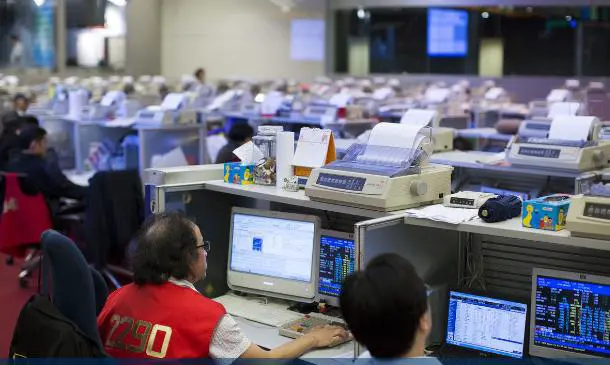Data of the Shanghai-Hong Kong Stock Connect shows that the southbound trade of mainland capital speeds up in recent period with red-chip stocks including Chinese financial stocks frequently bought.
Hong Kong stock market plunged in the wake of unexpected result of the Brexit vote on June 24 with Hang Seng China Enterprise Index (HSCEI) once tumbling over 5.8 percent. But some capital went bottom fishing, and the index was soon drove up and finally finished down less than 3 percent. Notably, the total turnover, the buying turnover and the net buying of the southbound trade on June 24 all recorded new highs in 2016.
In fact, statistics show that from April 25 to July 4, 2016, the southbound trade has seen net buying for 45 consecutive trading days, totaling a net inflow of 61.3 billion yuan. The daily net buying even averaged to above 3 billion yuan in recent two weeks. As of the closing hour of July 4, the total quota balance of the southbound trade recorded 57.2 billion yuan, representing that 77 percent of the quota has been used, according to the website of Shanghai Stock Exchange (SSE).
By sorting out the trading data of the Shanghai-Hong Kong Stock Connect announced daily after the closing hour, it can be found that Chinese financial shares including the H shares of China Construction Bank Corporation (00939.HK) and Industrial and Commercial Bank of China Limited (01398.HK) are almost always among the top10 active shares. In just the past June, a net inflow of 10.5 billion Hong Kong dollars rushed from the mainland to Industrial and Commercial Bank of China, while around another 5 billion Hong Kong dollars rushed to China Construction Bank through the southbound trade. In addition, the H shares of Agricultural Bank of China Limited (01288.HK), China CITIC Bank Corporation Limited (00998.HK) and China Merchants Bank Co., Ltd. (03968.HK) also saw constant inflow of capitals via the southbound trade. Besides Chinese financial stocks, quality blue-chip stocks like HSBC Holdings PLC (00005.HK), Tencent Holdings Limited (00700.HK) and etc. are also favored by mainland capital.
Multiple traders and researchers in Chinese and foreign investment banks surveyed by SSN indicate that the expectation on Shenzhen-Hong Kong Stock Connect and the increased holding of Hong Kong dollar-denominated assets are the two main driving forces behind the rush of mainland capital into Hong Kong market. At present, the market holds great hope that “the launch of Shenzhen-Hong Kong Stock Connect might be announced at any time”. The Hong Kong Exchanges and Clearing Limited (HKEx) has initiated the end-to-end testing of the northbound trading of the Shenzhen-Hong Kong Stock Connect. All kinds of information about Shenzhen-Hong Kong Stock Connect raise the market’s attention to Hong Kong stocks. In fact, the enthusiasm of mainland investors in opening accounts in Hong Kong heats up in recent period.
There are also analysts believing that the elimination of main market uncertainties like Brexit and the injection of liquidities by central banks make the market pick up in confidence and risk preference. Horizontally or vertically, the valuation of Hong Kong stocks, especially red-chip stocks, is relatively low. Combined with their high dividend yield, such stocks are quite appealing and might attract more incremental capitals into the market.
Data from Hang Seng Indexes Company Limited shows that as of the ending hour of July 5, the P/E ratio of the HSCEI recorded only 6.81 times, while the P/B ratio was around 0.8 times, lower than the level held by the U.S. in the subprime crisis in 2008. Compared with the valuation of main markets globally, the valuation of the HSCEI is still far lower. However, the dividend yield of the HSCEI, reaching 4.3 percent on the whole, is higher than that during the US subprime crisis in 2008. The dividend yield of Chinese banking shares is widely above 6 percent. As to the premium, the Hang Seng China AH Premium Index reaches 133.98 points now, meaning that the H shares are nearly 34 percent cheaper than A shares on the whole.
Analysts from foreign banks believe that under weak global economic recovery and the short-term downturn brought by China’s transformation to GDP growth, Chinese government will keep focusing on the implementation of pro-growth measures, and the economy will not lose control. The smoothly advancing state-owned enterprises (SOEs) reform will improve the growth potential of red-chip stocks in the medium and long term. Now it is a good timing for investing red-chip stocks in Hong Kong market.
(APD/XH FINANCE)
 简体中文
简体中文

